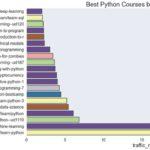Cybersecurity teams are eager to deploy AI-powered tools and are driven by factors including persistent hiring challenges. Vendors are eager to sell their AI-powered tools either to differentiate their new wares from older iterations as capable of meeting rising needs or to stand out among their competitors.
Machine learning and other AI techniques are applied to multiple aspects of cybersecurity, including anomaly detection, solving the false-positive problem and conducting behavioral threat analytics. They can also provide rapid, accurate responses to any cybersecurity compromises.
AI for identifying threats
The basic challenge of cybersecurity is seeing enough of what is going on to determine when things are happening that shouldn’t. This means detecting anomalies in the logs of system and network events that stream from every piece of an infrastructure, as well as all the major application and cloud services and environments. AI tools, without feeling bored or exhausted, can pay unwavering attention to event data streams, correlate and learn from events or observations in other environments via threat feeds.
Mots-clés : cybersécurité, sécurité informatique, protection des données, menaces cybernétiques, veille cyber, analyse de vulnérabilités, sécurité des réseaux, cyberattaques, conformité RGPD, NIS2, DORA, PCIDSS, DEVSECOPS, eSANTE, intelligence artificielle, IA en cybersécurité, apprentissage automatique, deep learning, algorithmes de sécurité, détection des anomalies, systèmes intelligents, automatisation de la sécurité, IA pour la prévention des cyberattaques.






